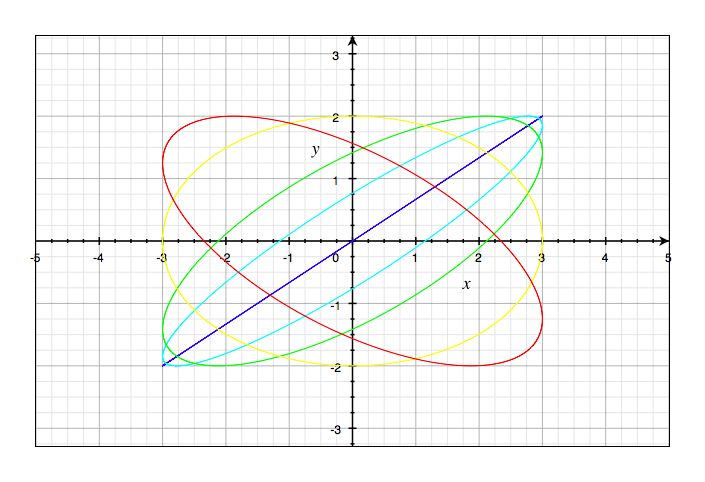Taylor 5.2-5.4 (today), and 5.4-5.6 (Monday).
The second exam is Friday. There is also an SPS event on Friday.
On next homework assignment, any answer without explanation will lose half credit automatically. You MUST write some sentences on the page!
Points will be taken off for the use of vector quantities that lack any indication of the vector nature of the quantities .
Now let's look at the energy of the harmonic oscillator. Take the solution x(t) = A cos(ωt - δ) and substitute into the expression for the potential energy,
Differentiate x(t) to obtain the velocity and use this to write the kinetic energy
where we've used the relation ω=k/m. The total energy is the sum
a constant as it should be since the linear restoring force is conservative.
where there are four constants to be determined by the initial conditions: Ax, Ay, δx, and δy. Four are required in general for two independent second order differential equaitons.

If ωx/ωy is a rational number, then the motion is periodic (i.e. the mass will eventually return to its initial position with its initial velocity and completely retrace the path it took to get there. If the ratio is irrational, then the motion never repeats.